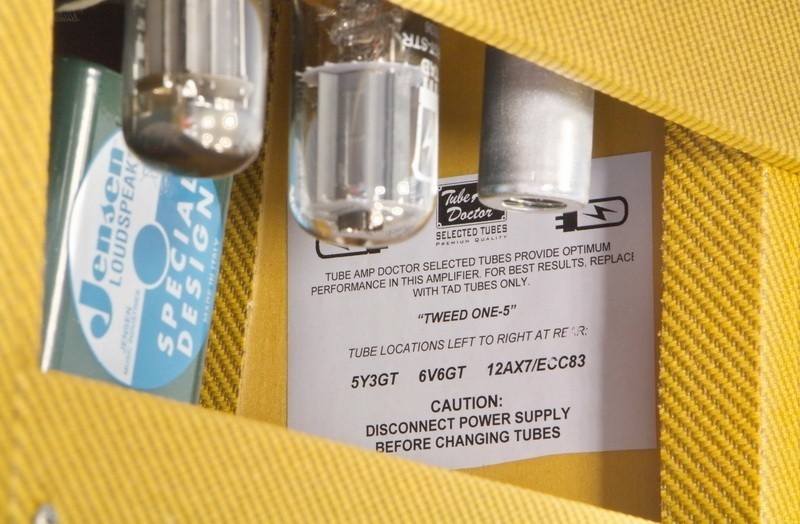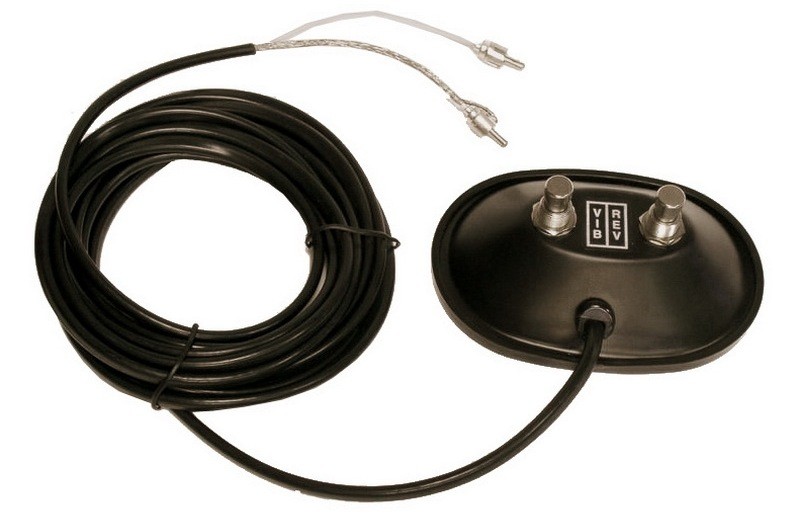« More than just a tool for high volume »
For a long time, transistor amplifiers have been considered the perfect amplifiers for acoustic guitars. However, for those seeking more than just a pure “loudmaker” for their instrument, it’s worth familiarizing oneself with the advantages of tube amplifiers. We present the benefits of a tube amp for the acoustic guitar and reveal the prerequisites that the guitar and the used amp must meet for an optimal sound result. Our topic today: Connecting an acoustic guitar to an amplifier.
Can an acoustic guitar be connected to an amplifier?
A classical concert guitar cannot be easily connected to an amplifier. Unlike the electric guitar, the folk guitar is not designed for use with them. However, there are, of course, ways to connect a guitar to an amplifier – we present various options.
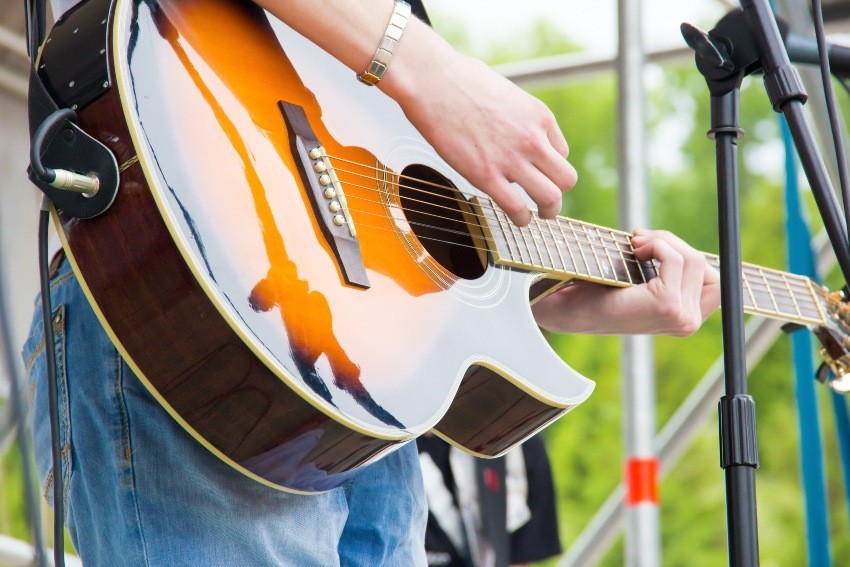
Pick-Up
Many manufacturers equip their acoustic guitars with a built-in pickup. The pickup, attached to the soundhole, captures the signal of the vibrating steel strings and directs it to a standard quarter-inch jack. The pickup’s signal can then be transmitted to an amplifier using an instrument cable, similar to the pickup on an electric guitar.
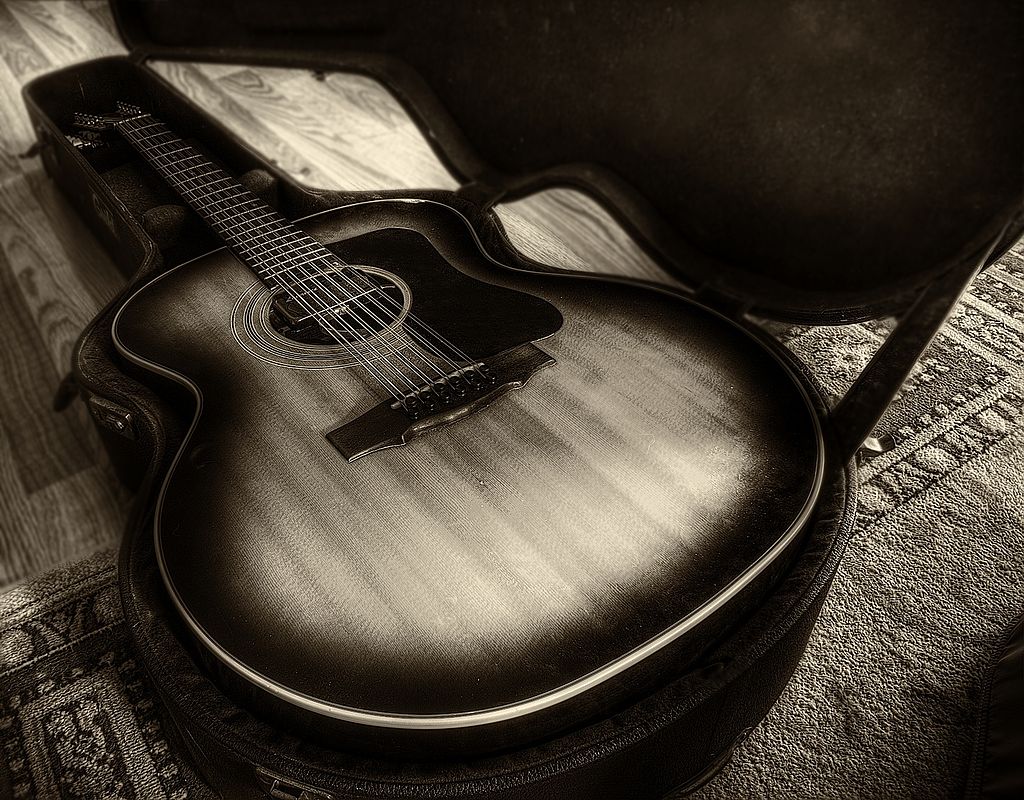
The advantage of this pickup system is obvious: The pickup can be connected to any standard guitar tube amplifier without much effort. Unfortunately, some guitarists are bothered by the appearance of the installed pickups and prefer the clean look of a purely acoustic instrument. For many musicians, however, this is not a reason to forgo the benefits of an amp.
Retrofitting a pickup is always possible, assuming some craftsmanship skills. However, it is often advisable to visit a guitar builder if the goal is to connect an acoustic guitar to an amplifier.
Piezo pickups
In contrast to classic pickups, piezo pickups do not operate with an electromagnetic field but generate the signal from the vibration of the guitar body. This means they can be used with any guitar model and are not dependent on steel strings – folk guitarists can breathe a sigh of relief!
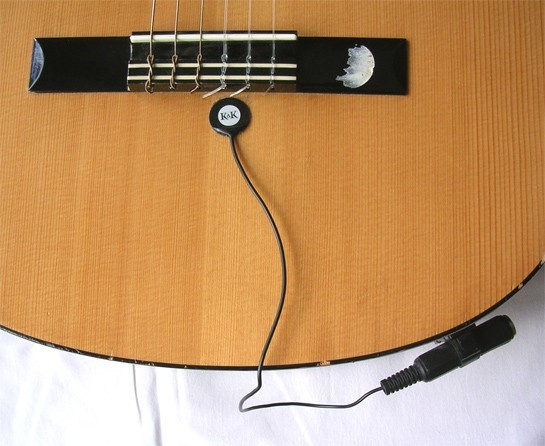
The disadvantage of the piezo system is the necessary pre-amplification of the signal. This is required to boost the very subtle signal to the necessary strength. Often, special preamps are installed inside the acoustic guitar for this purpose, or alternatively, an external preamp can be used.
The alternative: Microphone
Of course, an acoustic instrument can also be captured using a microphone – in the case of the guitar, a condenser microphone with a small diaphragm positioned centrally in front of the soundhole is perfectly suitable. With this option, the guitar can be directly routed to the PA, although without providing the tonal possibilities of a dedicated amplifier.
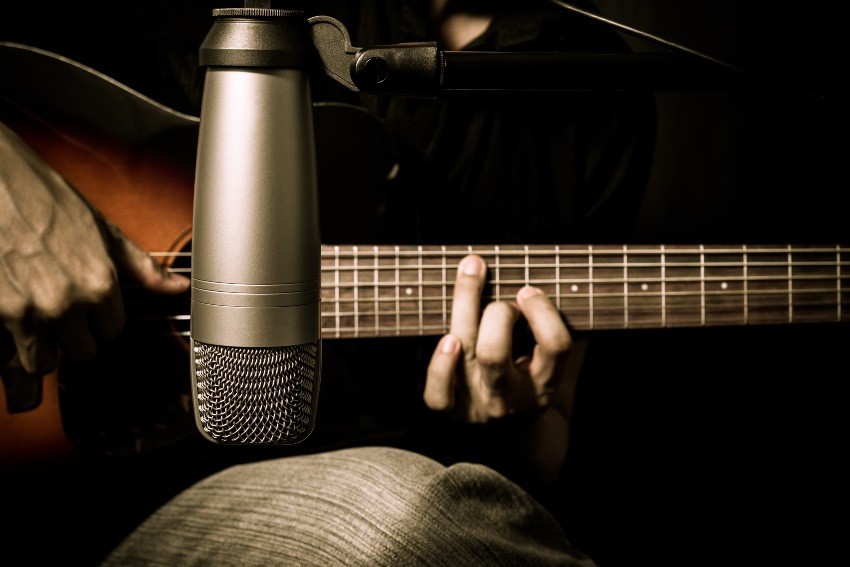
Many acoustic amps offer the possibility to reproduce a microphone signal. For this purpose, these amps have so-called phantom power, which is a special power supply for the signal and can be connected using XLR cables.
Tube amp or transistor amplifier for acoustic guitar: a comparison
When considering the optimal folk guitar amplifier, in addition to classic criteria such as power or effects, the sound of the respective device needs to be emphasized. After all, the guitar is an instrument that relies on its own body sound and generates its tone from the interplay of wood, strings, and fingers.
The desire for a tube amp that sounds as neutral as possible can be understood in this regard, but the belief that a tube amp is not suitable for acoustic guitars is misguided. We present the advantages and disadvantages of tube and transistor amps for amplifying acoustic guitars.
Transistor amplifiers – advantages and disadvantages
Transistor amplifiers are particularly popular among acoustic players. The reason for this lies in their very neutral reproduction, featuring a linear frequency response. What can sometimes lead to sterile sounds in the case of electric guitars is actually desired when reproducing acoustic guitars: they accurately reproduce all the tonal characteristics of the instrument and have a large headroom, meaning significant volume reserves that can be achieved without distorting the preamp or power amp.
However, when a slightly colored, warm sound is desired, the analytical transistors are at a disadvantage: they lack warmth and naturalness in the sound. Special playing styles are also challenging to achieve, especially when dealing with dynamic behavior and slightly rough passages; the transistor amp is at a disadvantage in such situations.

Tube Amplifiers – Advantages and Disadvantages
Tube amplifiers operate analogically and alter the incoming signal depending on the type of tube used and the set gain. They also do not offer as much headroom as transistors. However, their advantage lies in the natural, warm sound shaping and the ability to play with a wide dynamic range. The amplifier further highlights the nuances of the instrument and amplifies them in a musical manner. While the influence of the amplifier is audible, a tube clearly delivers the signal of an acoustic instrument – not a stripped-down version of an electric guitar sound.
Choosing the optimal amplifier: What features should an amplifier for acoustic guitar master?
In addition to simply amplifying the input signal, an amplifier can take on many more functions: tonal modifications through effects and feedback suppression are crucial criteria when selecting an amp for acoustic instruments. And why is a specific acoustic amp necessary, and what is a linear frequency response?
Effects for acoustic guitars
Especially in concerts and recordings, additional effects are often used. This also applies to the acoustic guitar. Spatial effects, in particular, are commonly employed, and many tube amplifiers for guitars already come with reverb and echo effects. However, this doesn’t have to be the end; additional effect devices can easily be connected in front of an acoustic amp. Requirement: The instrument is connected using an instrument cable.
Feedback Suppression
The resonating body of guitars is particularly susceptible to feedback at high volumes. In the past, guitars were often stuffed or the soundholes were covered with special shields, with foreseeable consequences for the sound. Acoustic amplifiers, therefore, come with various solutions to combat feedback: phase reversal, low-cut filters, and notch filters can be set to specific frequencies and work against unwanted feedback.
Why do you actually need a specific acoustic amp?
Many guitarists often wonder why a dedicated acoustic amplifier is necessary at all. After all, can’t you connect an acoustic instrument to an amplifier using a “regular” guitar tube amp? Unfortunately, that’s not the case. While a classic tube amp like a Vox AC30 can reproduce a guitar signal, a linear frequency response trims the acoustic signal in typical electric guitar amps. Normal tube amps cannot easily reproduce very high overtones, causing the sound to lose body and musicality. Connecting an acoustic guitar to an amplifier is therefore only possible if the amplifier has appropriate speakers (tweeters).

Connecting an Acoustic Guitar to an Amplifier
Can you connect an acoustic guitar to an amplifier? This is a question that many guitarists ponder, especially those who wish to perform live with their instrument. Since a linear frequency response is not ideal for reproducing acoustic instruments, it is advisable to use a dedicated acoustic amplifier.
The sound and natural warmth of tube amps provide an ideal complement to the inherent tone of guitars and, depending on the equipment, can create an entirely new playing experience for the acoustic instrument.
 Tubeampdoctor Magazin
Tubeampdoctor Magazin



